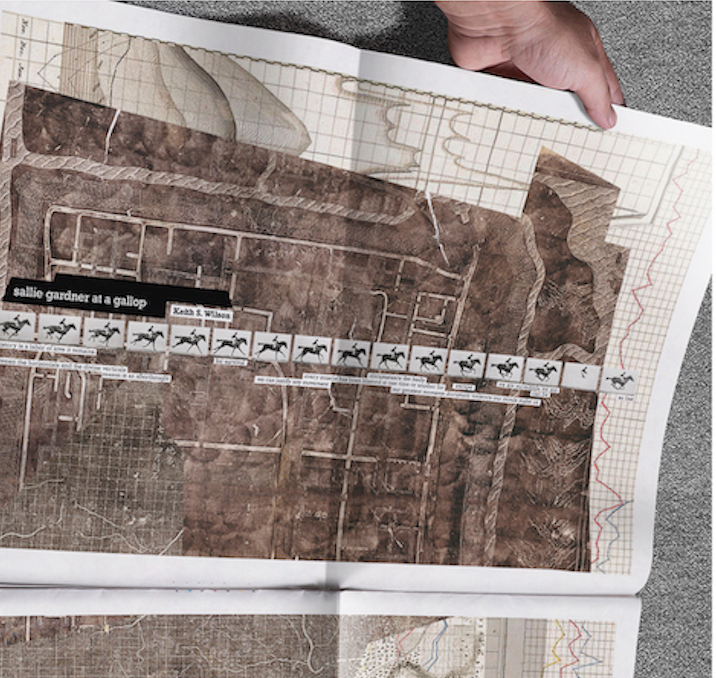Tab Journal has published several visual poems over the last two years. Perhaps because we use design thinking in our approach to poetry, we’re interested in the definitions, practices, and possibilities for poets who are consciously using visual elements to create meaning. Tab Communications Coordinator Lydia Pejovic talked with five visual poets for the March issue: Maria DeGuzmán, Kylie Gellatly, Monica Ong, Donna Spruijt-Metz, and Keith S. Wilson.
Here, she talks in further detail with Keith S. Wilson.
Lydia Pejovic: You write a mix of both visual and text-only poetry. Your poem in Volume 9, Issue 1, uses a strip of photographs as part of the meaning and design, and the poem seems shaped in relation to that. How do you decide which pieces should be visual and which should be wholly textual?

Keith S. Wilson: I try to remain open to the possibility of my own writing, especially outside of what I first intended. I used to write with the intention or hope, in the back of my head, of turning what I wrote into a finished piece. This is maybe like chiseling away at a statue, where there is a point at which I’ve concluded so many possibilities that what I have is final. This tends to happen with text-only poems. But now I view my writing as material, like any stanza I write is a piece of a collage, or a color of paint. So it MIGHT turn out to be strong when I’ve pushed it as far as it can textually go, but it might become something else entirely when I cut it apart, move it around, add it to something else.
Lydia Pejovic: How does the placement of lines in a visual piece change and/or enhance meaning?
Keith S. Wilson: I’m interested in a sense of play. In many of the understandings of that. Play means wiggle room and I’m interested in that–in one’s placement space allowing for more than one understanding of something. And play implies a sense of freedom and even joy sometimes, which comes sometimes through movement through space. But play can also invoke discipline and intentionality as well, as when one plays an instrument.
Lydia Pejovic: I saw that you have an interactive poem entitled “love” that I found to be innovative and interesting. How does technology influence the way you create visual poetry? Does it offer new opportunities?
Keith S. Wilson: It changes everything. Digital poetry shares a lot with certain kinds of theater and with video games—you can involve the direct actions of a reader/viewer. Which means you can implicate them, you can involve them or collaborate with them. There’s a barrier of entry into writing and coding this kind of work, and with engaging with it since technological literacy is often lower than reading literacy (and requires that kind of literacy as well), so it also closes off certain kinds of immediate understandings as well, but there are things I can do in an interactive poem that are not possible in a traditional poem.
Previously in Visual Poetry: Kylie Gellatly
Next Up in Visual Poetry: Maria DeGuzmán
